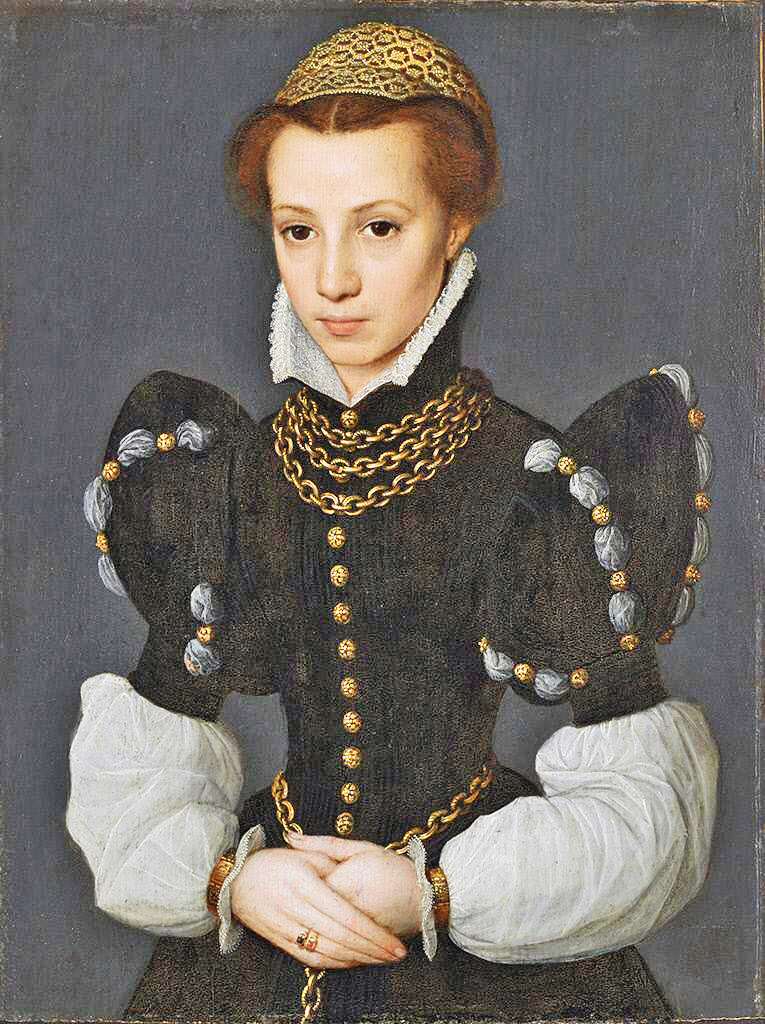In western Europe artists were often part of the guild structure. The Guild of St. Luke was one of the more successful, having guild houses in many western European cities. The Guild of St. Luke was especially strong in the Netherlands. First mentioned in city records in the late 14th century, the guild in Antwerp may have been the guilds founding city. Bruges, Haarlem, and other norther European cites had active Guilds of St Luke as well. It is interesting to note that the guild system was not particularly strong in Italy. The artistic community in Italy seems to have moved from a simple master/apprentice arrangement to an academy system.
 |
| Portrait of a Young Lady, oil on panel |
In the Netherlands and northern France women experienced a bit more freedom than in other parts of Europe and we find many in an artistic trade. By the late 15th century as many as 25% of the members of the Guild of Saint Luke in Bruges were women. Several successful artists come from this time and area, the first of which was Caterina van Hemessen.
Caterina van Hemessen (1528 - 1567) was born in Antwerp. She was a daughter of a well-known Mannerist painter, Jan Sanders van Hemessen. She learned to paint from her father and was known to have collaborated with him. Queen Mary of Hungary, Regent of the Low Countries, was her main patron and supporter.
| Self Portrait, oil on panel, 12.6 in. x 9.84 in. |
Caterina was regarded as a successful painter in her time. She was a portraitist; painting with oil on panel, most of her works were fairly small. Her subjects were wealthy patrons, usually painted against a plain dark background.
It is not clear when Caterina became a Master in the Guild of St. Luke. What is known is that she was the first woman to achieve that status and that she took at least three students.
Another first for Caterina was her most well known painting, Self Portrait. Many scholars believe that this is the first self-portrait of an artist, of either gender, depicted seated at an easel. This painting shows Caterina sitting at an easel, painting. It looks as though the viewer has entered the room just in time to see Caterina make that first stroke. Mahl stick in place, palette and brushes at the ready, we feel as though we've interrupted her. But, she's not upset, just patiently waiting our next question.
++++++++++++++++++++++
Selected Sources
Bois, Danuta, Distinguished Women of Past and Present; Caterina van Hemessen. http://www.distinguishedwomen.com/biographies/vanhemessen-c.html
Scotterjoseph, Irene. The Athenaeum - Caterina Van Hemessen. https://www.the-athenaeum.org/people/detail.php?ID=6188
Janson, Jonathan. Essential Vermeer 3.0 - The Guild of Saint Luke of Delft http://www.essentialvermeer.com/saint_luke's_guild_delft.html#.XY4o60ZKiUk
No comments:
Post a Comment